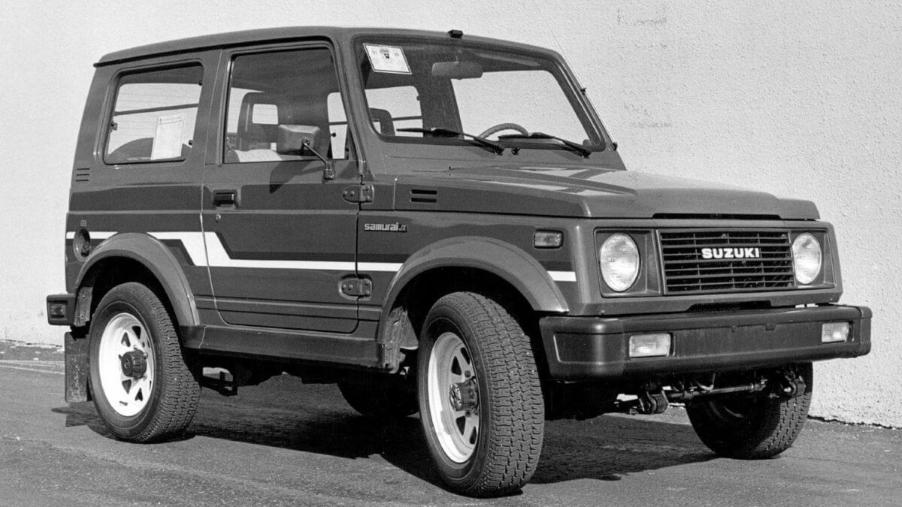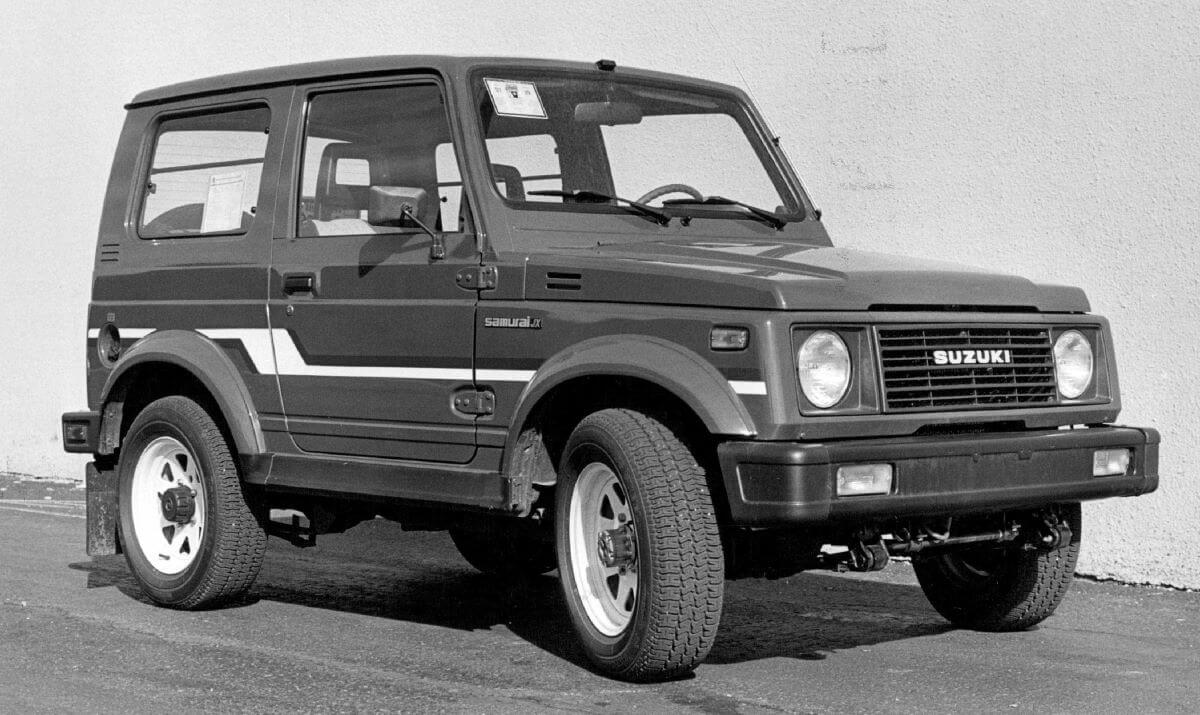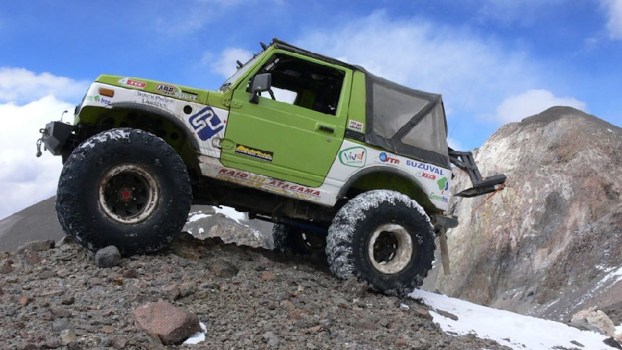
The Suzuki Samurai Is (Sort of) Still Alive
Unless you’re into off-road vehicles, you may only remember the Suzuki Samurai from the bad press it received after a test vehicle tipped over while performing evasive maneuvers to avoid a simulated accident.
On the other hand, fans of the capable little off-road Suzuki may remember that a modified 1986 Samurai SJ40 wearing its original non-U.S. model Suzuki “Jimny” nameplate crawled into the Andes mountains to attain a world record height of 21,942 feet on the side of the Ojos del Salado volcano near the border of Argentina and Chile in April of 2007. While that record stood for over 12 years, the Samurai’s story didn’t start or end there.
The Suzuki Samurai origin story
MotorTrend says the Suzuki Samurai’s roots go back to 1968 when the Hope Motor Company of Japan built a small 4×4 “kei-class” car capable of going off-road into most rugged terrain while still eligible for Japan’s small car tax benefits. The Hope Motor Company only produced a few dozen of the original ON360 models before Suzuki bought the company and used its design to develop the LJ10, which it introduced in 1970 as the Suzuki Jimny. Slightly off-topic but relevant to the Jeep vs. Samurai debate is the likelihood that the LJ in LJ10 was short for “Light Jeep.”
Early Jimny models featured a 359cc (0.36-liter) air-cooled twin-cylinder two-stroke engine with 25 horsepower, according to Silodrome. Engine improvements resulted in more horsepower with each subsequent model. However, from its inception, the capable little 4×4 featured a ladder chassis design and part-time four-wheel drive with a two-speed transfer case allowing high-speed two-wheel drive, four-wheel-high, and four-wheel-low ranges.
1981 saw the introduction of the second-generation Jimny, and in 1985, Suzuki brought it to the U.S. as the 1986 Suzuki Samurai. The first Samurai sold in the U.S. featured a 63-hp 1.3-liter overhead-cam four-cylinder engine with 74 lb-ft of torque. MotorTrend called it “noisy and slow,” accelerating from 0 to 60 mph in 16.9 seconds and taking nearly a quarter of a mile to do it.
With savvy advertising and a significantly lower price than the larger Jeep Wrangler, the Suzuki Samurai was an instant hit in the U.S. market selling 47,000 units in its first year. By mid-1988, sales climbed to 8,000 per month, ushering in a mid-year update designed to improve the Samurai’s ride and handling, including “softer springs, revised shock absorbers, and a thicker front anti-sway bar,” according to MotorTrend. While the Samurai remained on sale in the U.S. through the 1995 model year with few upgrades other than throttle-body fuel injection in 1990 and a removed backseat in 1994 to comply with (or avoid) new rear seat seatbelt laws, 1988 was the beginning of the end for the Suzuki Samurai.
Why did the Samurai leave the U.S. market?

In 1988 Suzuki improved the Samurai’s ride and handling but also raised the price based on the rising value of the Japanese yen compared to the American dollar. While the Samurai would likely have survived the price increase, a Consumer Reports video ultimately led to its demise.
The Consumer Reports video of a Suzuki Samurai tipping over during a “40-mph crash avoidance test” made national headlines on the evening news. Consumer Reports urged the National Highway Traffic Safety Administration (NHTSA) to issue an immediate recall and removal of all Samurais from U.S. roads, according to AutoWeek, but the NHTSA refused. Suzuki claimed the modified test caused the tip-over, although Suzuki already had concerns about its “propensity to tip.”
Does Suzuki still make the Samurai?
While Suzuki no longer puts a Samurai badge on it, they still produce the Jimny for other markets around the globe. The third-generation Jimny debuted in 1998 and ran for 20 years before the current fourth-generation took over in 2018. Suzuki’s New Zealand 2023 Jimny model presents a sleek exterior package with modern tech and a comfortable cabin while maintaining its rugged off-road prowess




